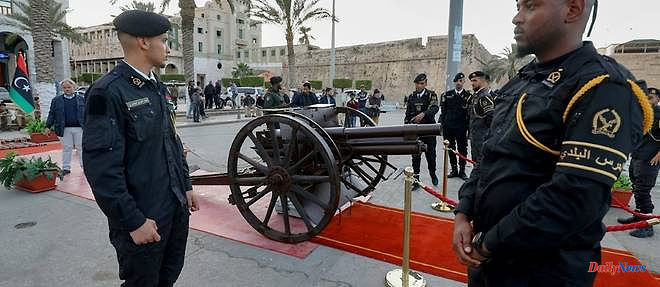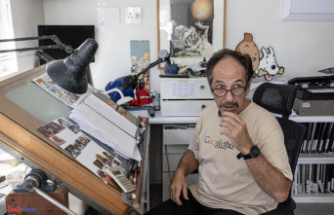In the heart of the old city of Tripoli, a cannon shot rang out. It does not announce the return of war in Libya, but of a tradition of Ramadan that the authorities want to revive after decades of dictatorship and chaos.
On the large Place des Martyrs, the red carpet was rolled out Thursday evening for a 600-year-old cannon, jealously guarded by officers wearing berets. A few minutes before the call to prayer, which announces the end of the Muslim fast, the gunpowder explodes at the start of the month of Ramadan.
This old tradition widespread in the Muslim world had not seen the light of day since the end of the 1970s and the beginning of the dictatorship of Muammar Gaddafi, who wanted to wipe the slate clean of Libyan history. But for the new authorities, "nothing stands in the way" of the "canon of iftar", the meal for breaking the fast.
"It's a way to bring joy to the people of Tripoli," said Akram Dribika, city councilor responsible for overseeing the event. For him, it is a question of conveying the "message of a return to life" in Libya.
Since Gaddafi's death in 2011, in the midst of the Arab Spring, Libya has experienced political chaos and armed violence between rival camps. But society has also rediscovered its taste for the culture, history and traditions of a country with a very rich heritage.
The origin of the iftar canon remains unclear. It would have been born in Ottoman Egypt two centuries ago, before the democratization of watches and then of technologies. The cannon shot then allowed the authorities to warn the faithful of the imminence of the end of the fast at sunset.
In purple djellaba, Nouri Sayeh was only "passing" through the Place des Martyrs before coming across this "beautiful surprise" of the cannon of the iftar brought back into the spotlight.
"For Ramadan, our heritage, our traditions, it's something very important that must continue to exist," said the 32-year-old trader.
The event is part of efforts by authorities and civil society to revive Tripoli's old medina, now undergoing renovation after being abused during Gaddafi's 40-year rule.
Artists, craftsmen and other merchants bring new life to the cobbled alleys and buildings that recall the passage through Libya of Roman, Greek and Ottoman civilizations.
After the iftar meal, the medina fills with families buying cotton candy and young people chatting on benches drinking coffee, while others take selfies in front of the Ramadan decorations.
For the second consecutive year, the municipality has adorned the main squares and alleys with illuminated garlands, traditional lanterns and other large installations in the shape of a crescent moon, a symbol of Islam.
Growing up in the neighborhood, Racha ben Ghara relishes seeing the crowds and the lights when she previously had to "use the light bulb on the phone to walk" through the once unpaved alleys of the old city.
"People only came to shop at the souk but not like today to admire the view and the heritage," recalls this 35-year-old civil servant.
Even the youngest, present in large numbers, express by their strong presence their attachment to the medina. At 20, Motassam Hassan even hopes that all of Libya, including the less developed peripheries, will follow this "evolution".
For this computer science student, "what we see in the medina must also happen in all the other places, even outside Tripoli, which must be illuminated in this way".
24/03/2023 23:15:48 - Tripoli (AFP) - © 2023 AFP












